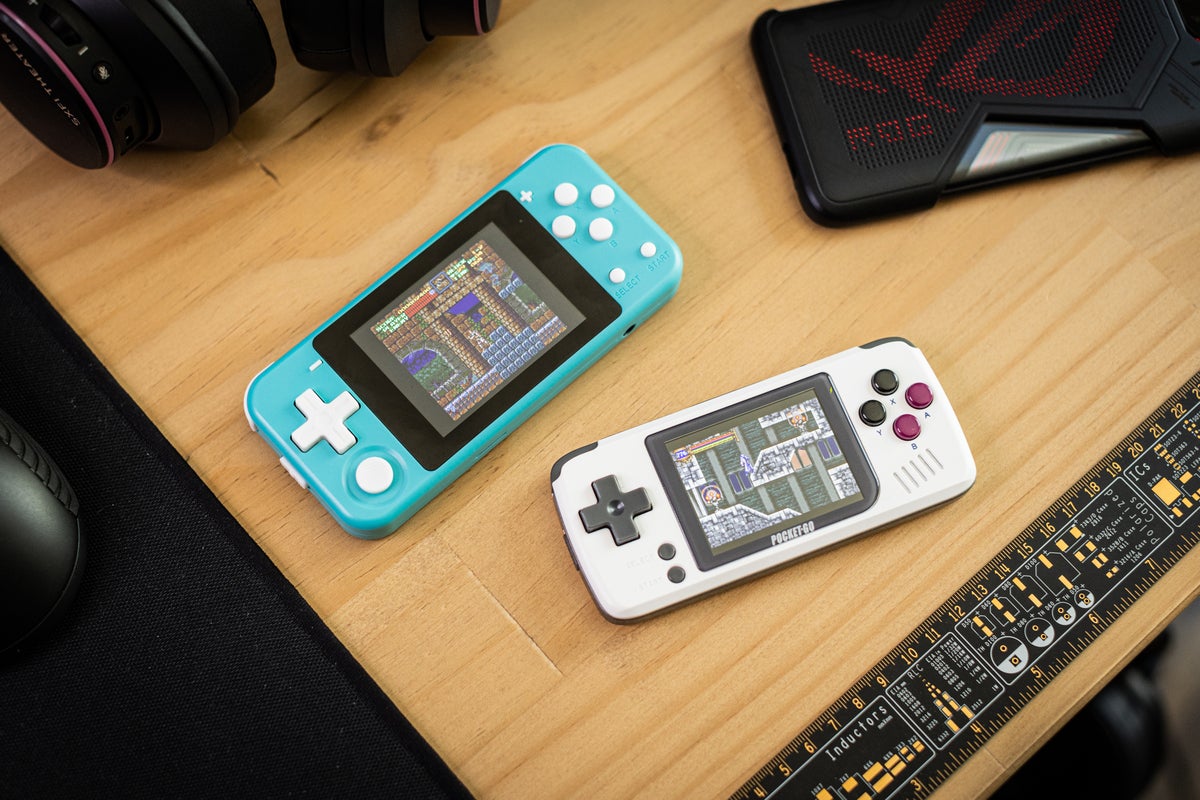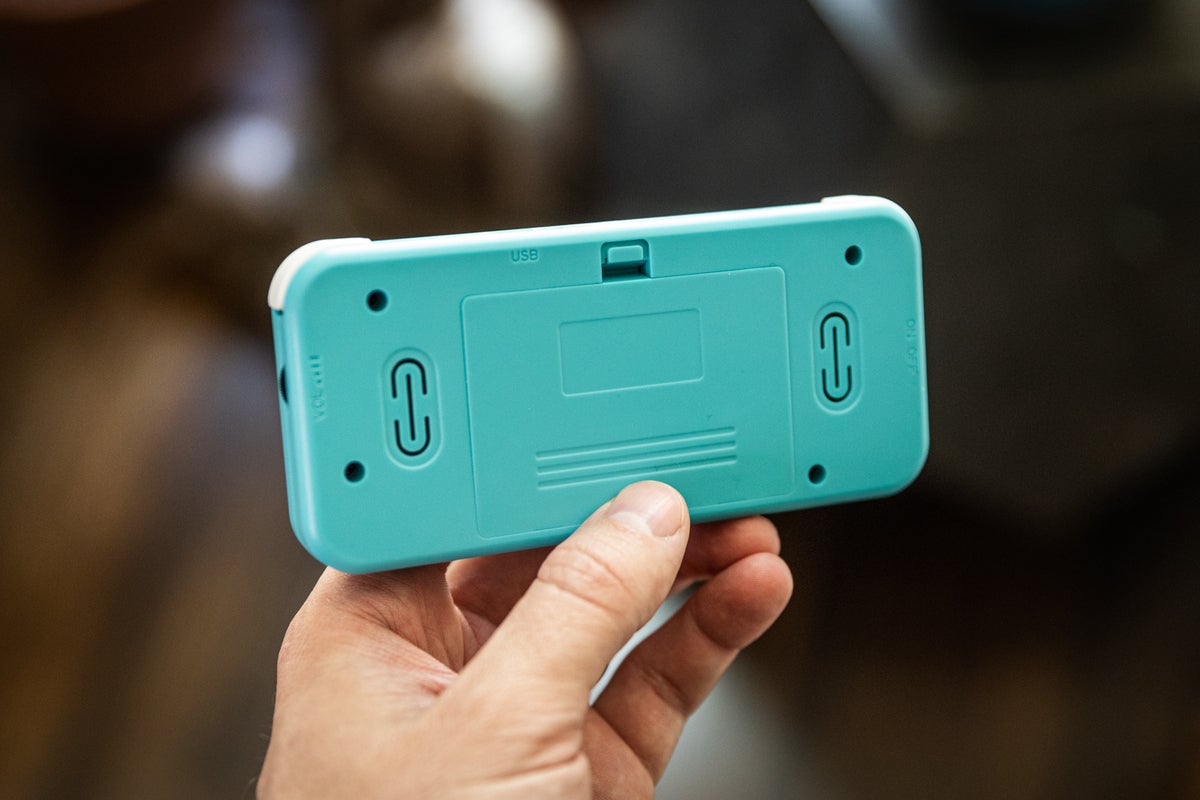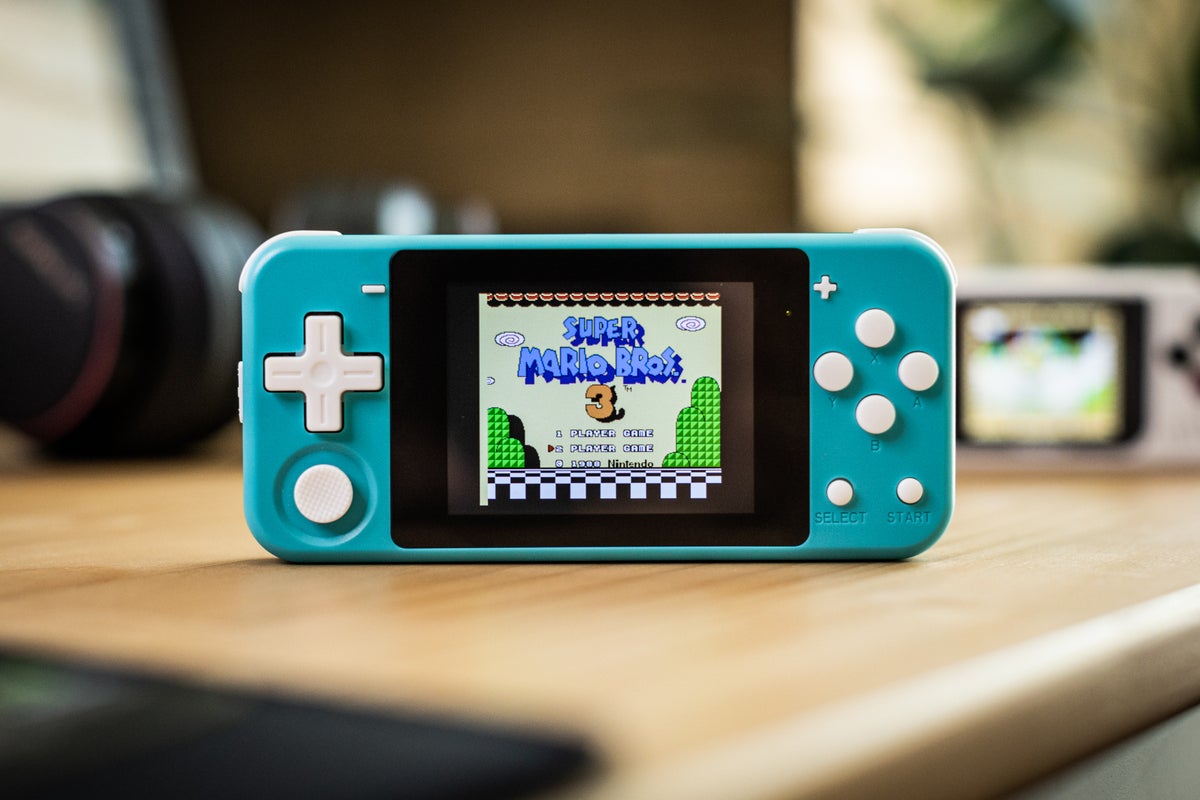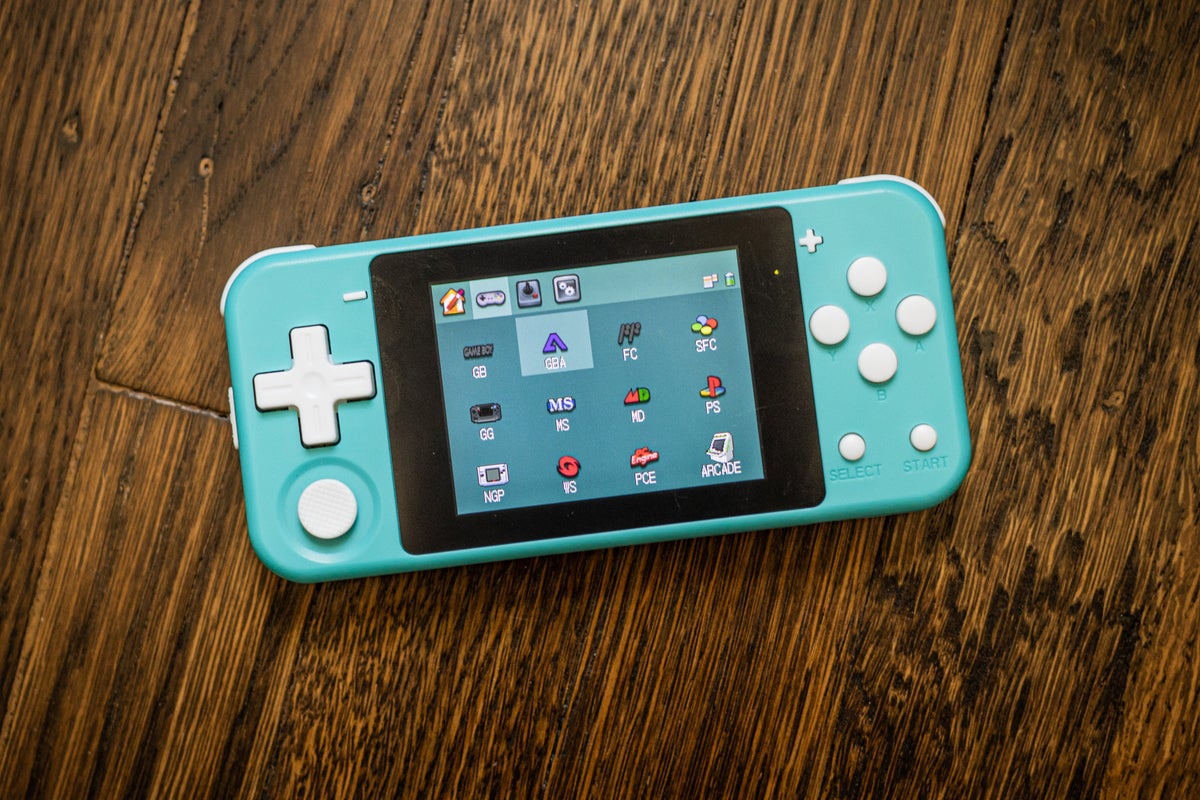Powkiddy Q90 review: A solid retro gaming option - seaythoomed
The Q90 by Powkiddy is yet another portable twist for lovers of handheld retroactive gaming emulation. Priced affordably at $36 on Powkidy.com (sic), it comes with some nice features and a nice build calibre. But like all the products on the marketplace now you still have to deal with some quirks. This small handheld emulator is worth checking out, especially given its price, though it falls short in few cay places.
In my view the real competition in this $30 space is the PocketGo, which I reviewed last yr and continue to use flat though I have more powerful ironware. The Q90 boasts a number of upgrades concluded the PocketGo and should be considered when looking such a small and cheap twist.
 Robert Adam Patrick Sir James Murray/IDG
Robert Adam Patrick Sir James Murray/IDG The Powkiddy Q90 (left) and PocketGo (right) are similar in many an ways but deviate in key areas.
Q90 vs PocketGo: Computer hardware
The Q90 improves upon the PocketGo in overall size. The PocketGo is super-small at about 12.5 x 5.5 x 1.5mm. Spell that petite size helped with portability, the device could cramp improving my hand after foresighted gaming Roger Huntington Sessions. The thicker Q90, at some 13.8 x 6.5 x 1.8mm, helps for those yearner gaming sessions but is inactive small plenty to throw in a pocket. When it comes to physical size I give the adjoin to the Q90.
When we get to the screen, big isn't necessarily better. Both devices feature a 320×240 IPS panel, but thanks to the big size of the Q90 the screen is large, too—3 inches diagonal, vs 2.4 inches happening the PocketGo. While that conflict doesn't appear like much, that extra one-half-inch or so does ease eyestrain over time.
Other than the size, however, the PocketGo's shield is vastly high-ranking: brighter, sharper, and with better off-axis viewing angles. Unless you must have a larger screen, the PocketGo wins present.
 Adam Patrick Murray/IDG
Adam Patrick Murray/IDG The Q90 is bigger than the PocketGo, but it's yet rich plenty to carry in a pocket.
When it comes to inputs we see a few noteworthy differences. In the Q90's favor, IT charges via USB-C, a welcome rising slope to the Micro-USB on the PocketGo.
The rest of the picture is more problematic. The buttons and d-pad on the Q90 are spongy and boast card sharp edges, compared to the PocketGo's clicky feedback and rounded edges. I've preferred clickier controls, so there is some subjectivity here. However, I also wasn't a fan of the Q90's thumbstick (happening the left side) for use in supported games. It's of the sliding multifariousness, which substance there is very little change of location. Resistance is tight enough that it's hard to slide in a smooth fashion.
In the audio department, both lineament a 1/8-inch phone jack. The Q90 has two-channel speakers where the PocketGo has mono, and that seems like a plus. Unfortunately the Q90's speakers are situated on the hind of the device, so the sound moves away from you, and can too get muffled past hand placement. The PocketGo is the better option if you don't want to use headphones.
 Adam Patrick James Murray/IDG
Adam Patrick James Murray/IDG Rear speakers mighty where fingers are placed = stinky. Removable bombardment = good.
The Q90 does have a bigger barrage than the PocketGo at 1500mAh versus 1000mAh. Piece the larger screen negates some of those gains, the Q90 still lasted yearner, and then it earns the battery vantage. On top of that information technology's well expendable compared to the PocketGo, which is always a plus in my book.
When it comes to computer hardware I think there are some enceinte advantages the Q90 has over the PocketGo, all but notably the larger screen, large barrage, and to a greater extent comfortable dimensions. But the PocketGo is top-hole when it comes to riddle timber, button feel, and speaker positioning.
Q90 vs PocketGo: Software
The amount of emulators the Q90 supports is staggering (as with most of these devices), with support for GameBoy, GameBoy Coloring, GameBoy Advance, NES, SNES, Maestro System, Genesis, PC Engine, Neo Geo, Playstation 1, and more than. Unfortunately public presentation in most of these emulators waterfall behind what you'll undergo in the likewise priced PocketGo.
 Cristal Patrick Murray/IDG
Cristal Patrick Murray/IDG Despite having the same internals, the PocketGo offers a sande emulation experience than the Q90.
Both handhelds feature the AllWinner F1C100S CPU, which means more intensifier SNES games the like F-Zero ran at at stuttery, low frame rates that were nowhere near playable without tweaking in the ape options. Same goes for more colonial GameBoy Advance games like Metroid: Zero Mission and Castlevania: Aria of Sorrow —there were problems with silver screen tearing and audio drops in its nonremittal configurations.
For the most part 16-bit and below is a nice experience if you don't expect emulated perfection, and I've been able to delight countless hours active. The PocketGo ISN't light eld forwards of the Q90 on performance, but overall the older device gave me fewer hiccups and a sande experience in many of my favorite games.
Patc the Q90 comes with a PS1 emulator, it's unsubdivided going, with excessively many problems to list—I didn't have a smooth-textured play session with any of the games I tested. Even keeping my expectations low, Powkidy's determination to include hardware features like an parallel heart and soul and rumble support probably drove chisel up the cost unnecessarily. Piece I'm glad the option is at that place just in case you are interested, I would turn toward more powerful hardware for a break 32-bit and beyond experience.
 Adam Patrick Gilbert Murray/IDG
Adam Patrick Gilbert Murray/IDG The NXHope front of the Q90 is simple and customizable but a bit obtuse to use.
The Q90 ships with the NXHope emulator software atomic number 3 its front end. It's clean easy to navigate if you've secondhand one of these take-away emulators before. Button configurations change depending along context, soh there is a learnedness curve. Overall, even so, it's equal to the front end of the PocketGo in almost every aspect, including an unaccommodating barrage fire status icon and complications with getting ROMs onto the device.
When information technology comes to performance there is plenty of fun to equal had on the Q90, merely for almost every game I played connected both systems the PocketGo was the master performer. If you are looking for the best performance, pick the PocketGo.
Conclusion
The Powkiddy Q90 has some great things passing for IT, including its cute innovation, big screen, and more wide adhesive friction. Information technology's worth a look if you want a small movable emulator that has deal of power to play nearly retrospective games adequate to the 16-fleck era. But if you can suffer the smaller size, I still think back the PocketGo is the better option scorn information technology's age, because of its smoother overall performance and better hardware.
Source: https://www.pcworld.com/article/399282/powkiddy-q90-review.html
Posted by: seaythoomed.blogspot.com


0 Response to "Powkiddy Q90 review: A solid retro gaming option - seaythoomed"
Post a Comment